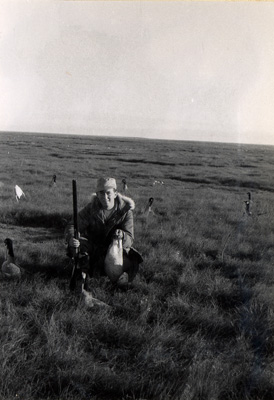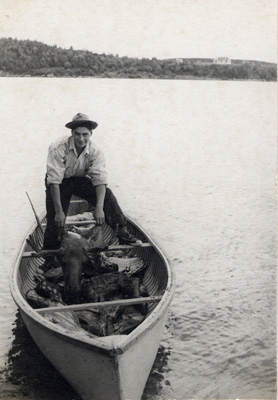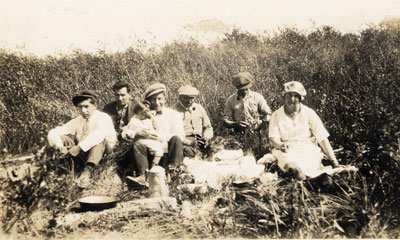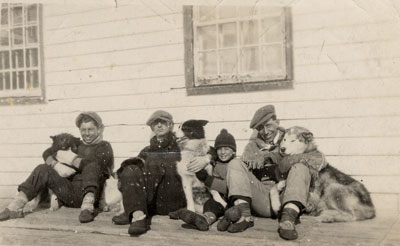Time Off
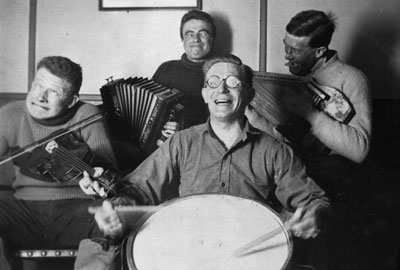
HBCA employees Charles Stephen, John Payne, Bill Watt and Gordon Webster relaxing at Fort Chimo, c. 1926.
© Glenbow Archives NA-3235-25
Though working conditions were often harsh, and busy periods came and went, fur trade employees did have some time to themselves. Social gatherings at Christmas and New Year, as well as for weddings and other celebrations, were times for all those associated with a trading post to take a break from the rigours of daily life. In addition, once every few years, staff had the opportunity to take a period of leave away from their post. Prior to the improvements in transport of the second half of the nineteenth century, officers, who were better paid, could occasionally return to Scotland to visit family and friends, whereas less well-off staff usually remained in the northwest, or perhaps visited the Red River settlement or other growing towns in the south.

Burns Night at Waboden, northern Manitoba, c. 1952. The 'haggis' in this photograph was made from a stuffed sock.
© Hudson's Bay Company Archives, Archives of Manitoba, Ernest Hampton. 1999/1/33
In addition to Christmas Day, Sunday was a day of rest. Some activities remained constant throughout fur trade history and often there were no distinctions made between those which were work and those that were leisure. Time spent hunting and fishing, for example, resulted in food and other resources, but was also regarded by some as sport. By the later nineteenth century, many of the games and leisure activities popular in Scotland and in the growing towns and cities of Canada were also found in northern fur trade centres. While some activities were enjoyed by a range of Hudson's Bay Company staff it is possible that participation was partly determined by an employee's status as officer or servant, just as class divisions in British society played a role in the popularisation of certain sports or activities above others. Certainly by this time, as the old hierarchies that had long shaped social relationships in the fur trade began to shift, it is likely that there were changes in access to leisure activities as well. It is less clear how interactions with Aboriginal people associated with posts shifted within the context of non-work activities, though visual evidence from photographs provides some clues for exploring this theme.
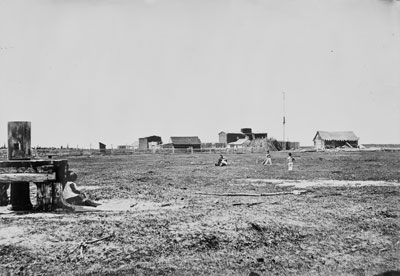
Cricket was sometimes played at northern fur trade posts such as Little Whale River, c. 1870s.
© Hudson's Bay Company Archives, Archives of Manitoba. James L. Cotter. 1987/363-C-55/32
The presence of European women at fur trade posts also had an impact on how people spent their free time. By the 1930s the wives of Hudson's Bay Company staff who had come to Canada to be with their husbands also took part in outdoor activities, such as sledging, camping and canoeing, that would have earlier been considered inappropriate. Before this any leisure time they had would have been spent home-making, writing letters and journals, and reading. York Factory, for instance, like many of the larger fur trade posts, had an extensive library for the use of senior staff and their families.
In more isolated posts, where the population consisted perhaps of only some half dozen Hudson's Bay Company staff and a Royal Canadian Mounted Police officer, people had to make their own entertainment. Surviving personal diaries often indicate the close relationships that were established in these small communities, where people had to make do and get on. Some spent their evenings playing cards, writing letters, or listening to music on the radio or gramophone. Those with artistic interests played musical instruments, carved small sculptures from wood, or sketched.

